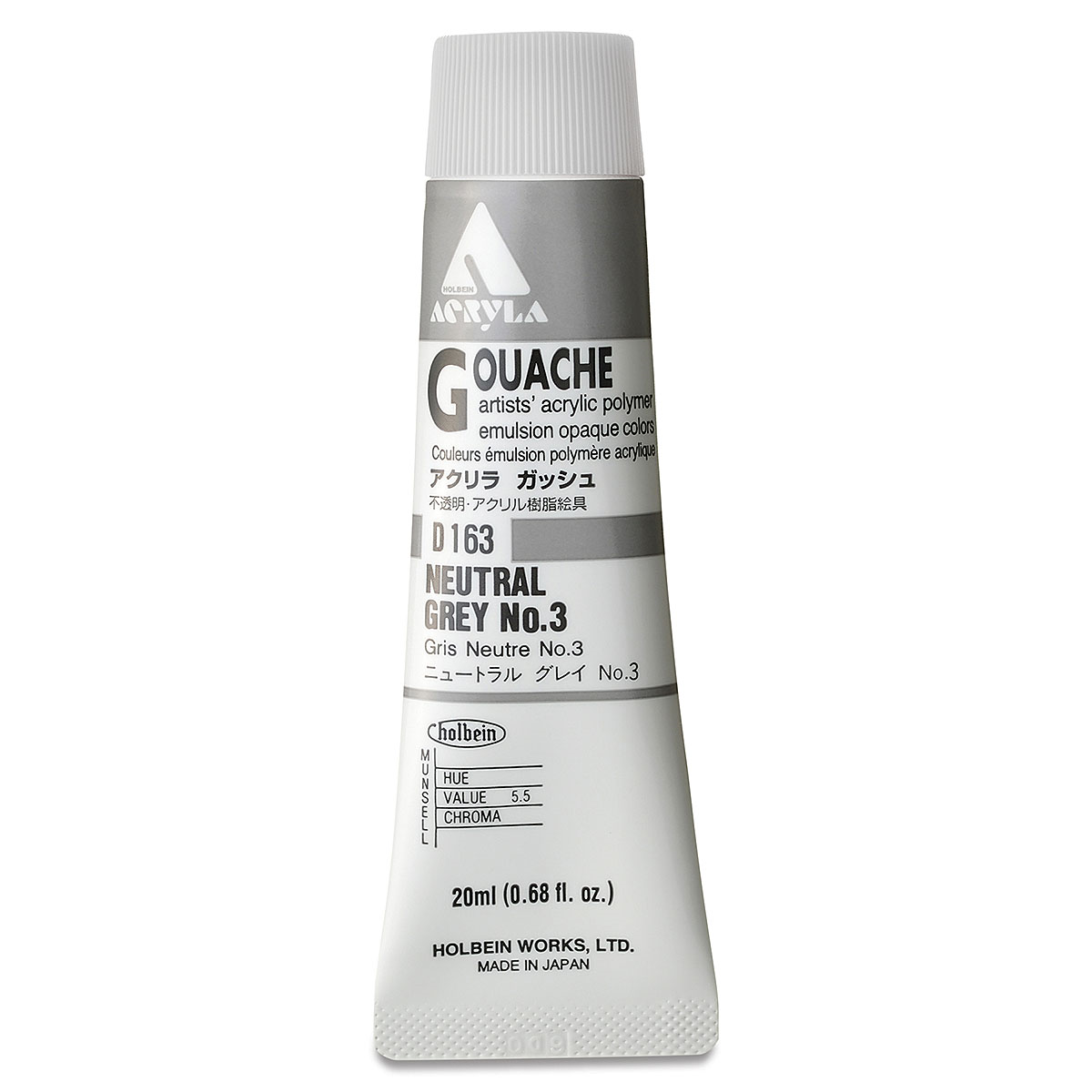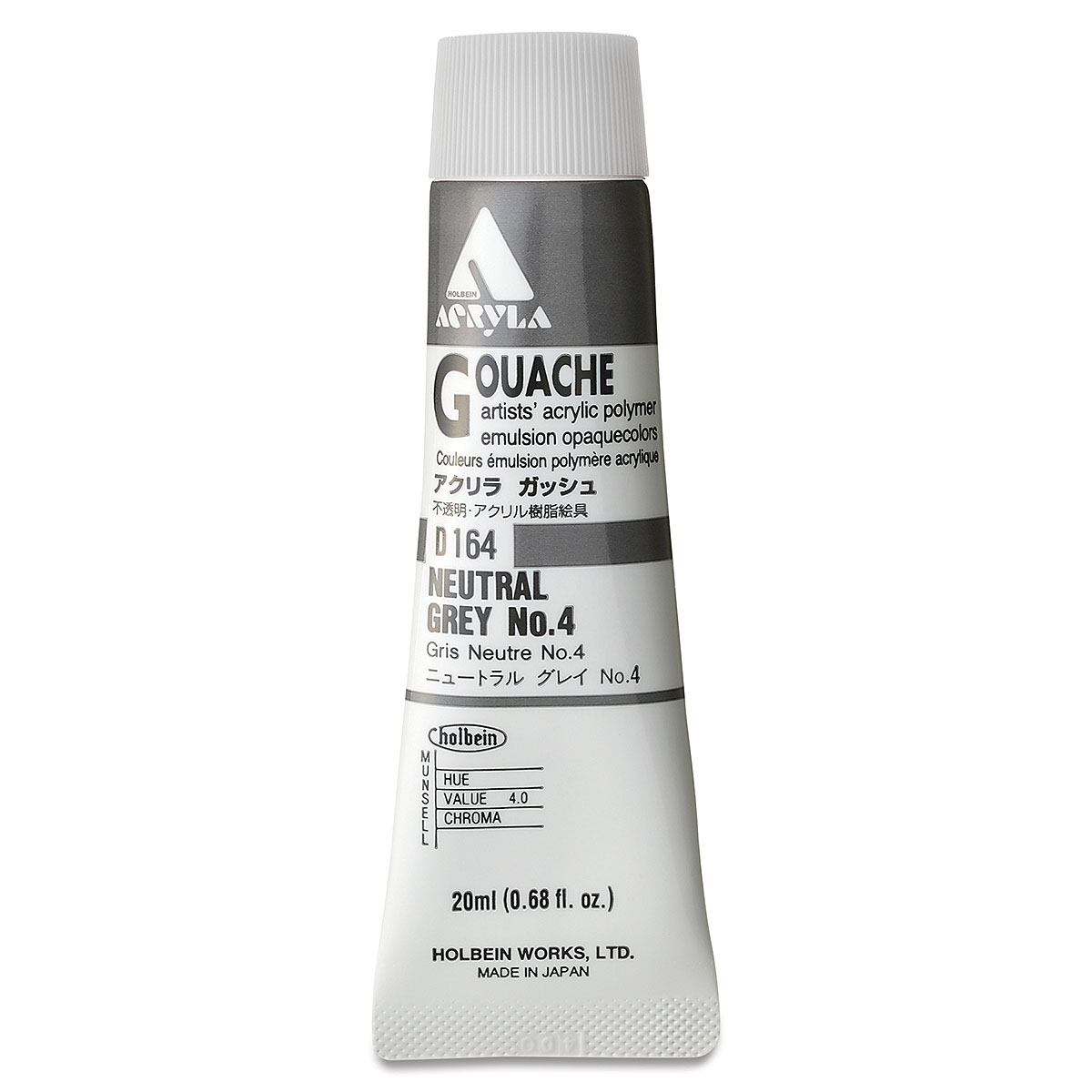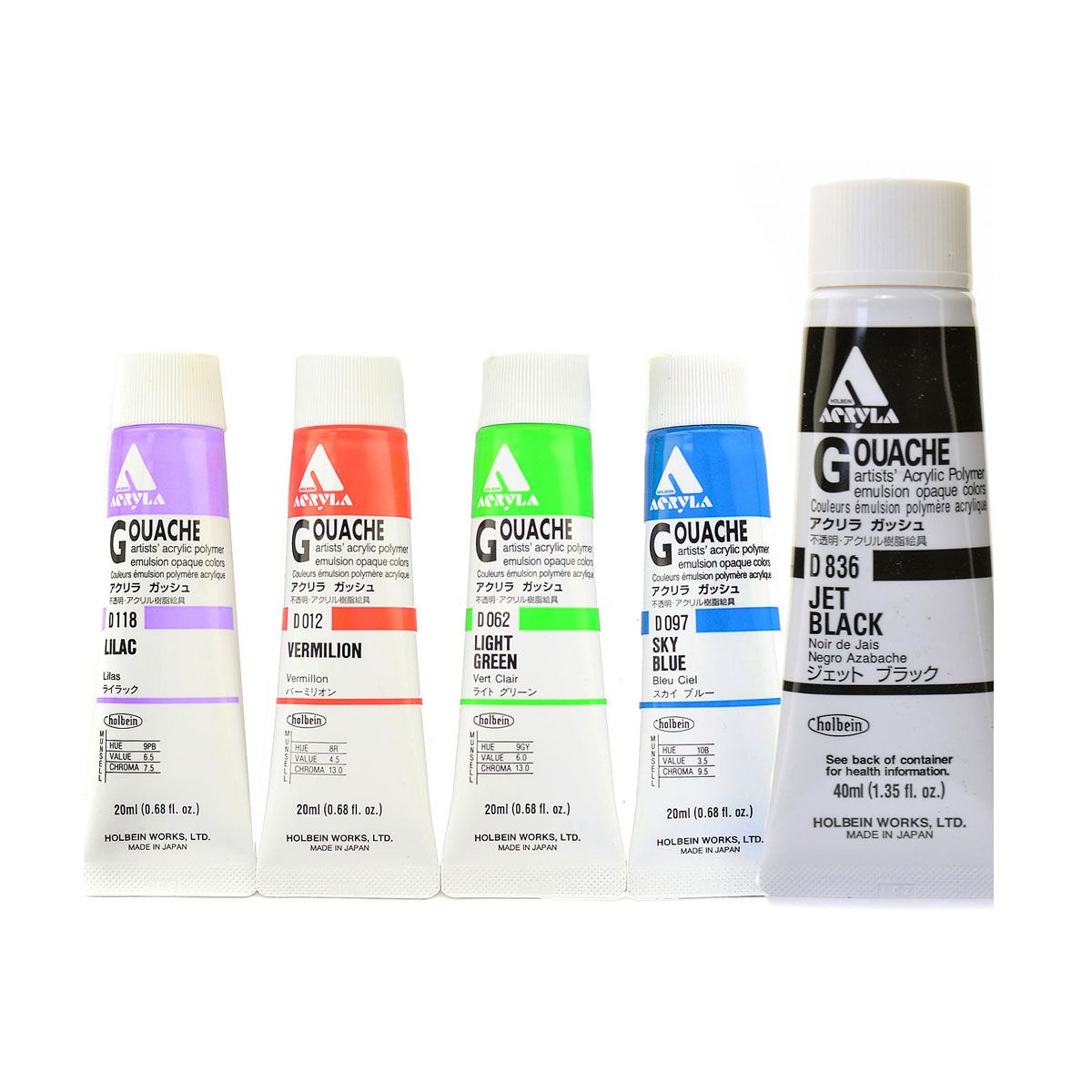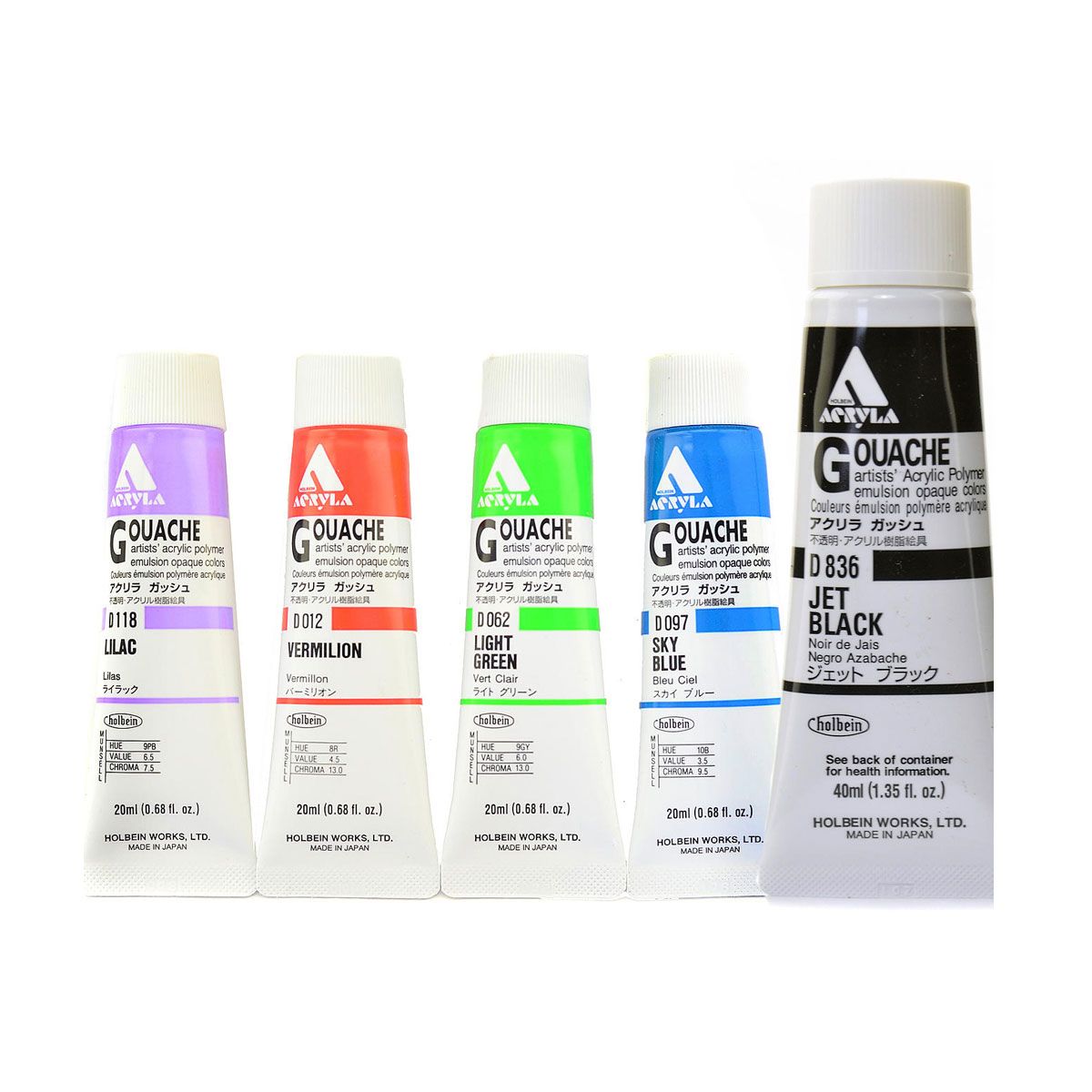Holbein Acryla Gouache Neutral Grey No.3 20 ml
D163 Neutral Grey No.3/Gris Neutre No.3 - Mars Brown PBr7, Lamp Black PBk7, Titanium White PW6
Lamp Black is a carbon-based black traditionally produced by collecting soot (known as Lampblack) from oil lamps. It has been used as a pigment since prehistoric times. Titanium dioxide's widespread use of the pigment began in the 1940s and has become the most commonly used white pigment.
Series: A
Lightfast: ****
D163 Neutral Grey No.3/Gris Neutre No.3 - Mars Brown PBr7 (Iron oxide), Lamp Black PBk7 (inorganic, carbon), Titanium White PW6 (Inorganic, Titanium dioxide)
Series: A
Lightfast: ****
Pigment 1: Mars Brown PBr7
History Unknown
Pigment Name: PBr7 Mars Brown
Pigment Type: n/a
Chemical Name: Iron oxide
Properties: Mars Brown has similar general properties to the pure red oxides, and it is often a mix of synthetic forms of oxides such as PY42, PR101, and PBk11. Its tinting strength is low, and it dries quickly. Hues vary based on manufacturer.
Permanence: Mars Brown has excellent permanence and lightfastness, with outstanding resistance to chemicals, heat, and weather.
Toxicity: Mars Brown is not considered toxic, although care should be taken not to breathe its dust.
Alternate Names: Brown Iron Oxide.
Pigment 2: Lamp Black PBk7
Lamp Black is a carbon-based black traditionally produced by collecting soot (known as Lampblack) from oil lamps. It has been used as a pigment since prehistoric times. It is the black found in Egyptian murals and tomb decorations and was the most popular black for fresco painting until the development of Mars Black.
Pigment Name: PBk7- Lamp Black
Pigment Type: Inorganic
Chemical Name: Carbon
Properties: Lamp black is a very opaque, heavily staining black pigment that does not have much covering or tinting power. It is typically the opaquest black in watercolour form. Though a very pure black, it tends to muddy slightly in mixtures. Natural sources may be brownish or bluish in tone because of impurities. When used in oil paints, it is one of the slowest drying pigments and should not be used in underpainting or applied in layers underneath other colours.
Permanence: Lamp Black is very lightfast and permanent. It is used in all techniques in permanent painting.
Toxicity: Carbon itself is not considered hazardous; however, other dangerous combustion products are often present as impurities when Lamp Black is produced from natural materials. For this reason, commercial preparations of the pigment should be considered slightly toxic. Avoid skin contact and inhalation. Where such impurities are present, Lamp Black is a possible human carcinogen.
Alternate Names: Carbon Black, Channel Black, Furnace Black, Oil Black, Vegetable Black. Flame Black is an impure version of Lamp Black. An alternate spelling is Lampblack, in which the first syllable is stressed, and the two words are elided to form a closed compound.
Pigment 3: Titanium White PW6
Titanium is the ninth most abundant element in the Earth's crust; however, mineral deposits that are economical to mine are less common. Titanium dioxide was first discovered in 1821, although it could not be mass-produced until 1919. Widespread use of the pigment began in the 1940s. Since that time, it has become the most commonly used white pigment. The name comes from the Latin word Titan, the name for the elder brother of Kronos and ancestor of the Titans, and the Greek word tito, meaning day or sun.
Pigment Name: PW6 Titanium White
Pigment Type: Inorganic
Chemical Name: Titanium dioxide
Properties: Titanium White is the most brilliant of the white pigments. It is considered an all-purpose oil colour useful in all techniques and the best all-around white. Its masstone is neither warm nor cool, placing it somewhere between Lead White and Zinc White. It is less prone to cracking and yellowing than Lead White, but it still yellows easily. Titanium White dries slowly in oil form, more slowly than Lead White but more quickly than Zinc White. It is opaque in oil and acrylic forms and semi-opaque in watercolour. This pigment has good chemical stability, and its tinting strength is superior to both Lead White and Zinc White.
Permanence: Titanium White has excellent permanence and lightfastness.
Toxicity: Titanium dioxide is highly stable and is regarded as completely non-toxic. Animal studies do not indicate that it is absorbed biologically, even after long periods of exposure. The primary safety concern is with inhalation of fine pigment dust particles. If inhaled in large amounts over the course of several years, Titanium White may cause a benign pneumoconiosis that is visible on x-rays. The National Institute of Occupational Safety and Health (NIOSH) considers fine titanium dioxide particles, if inhaled, to be a human carcinogen. The primary concern for artists is to avoid exposure to fine particulate dust from raw pigments.
Alternate Names: None.
| Size | 20 ml |
|---|---|
| Brand | Holbein |
| Country of Manufacture | Japan |
| Type of Store Credit value | Select |
















